21.07.2024
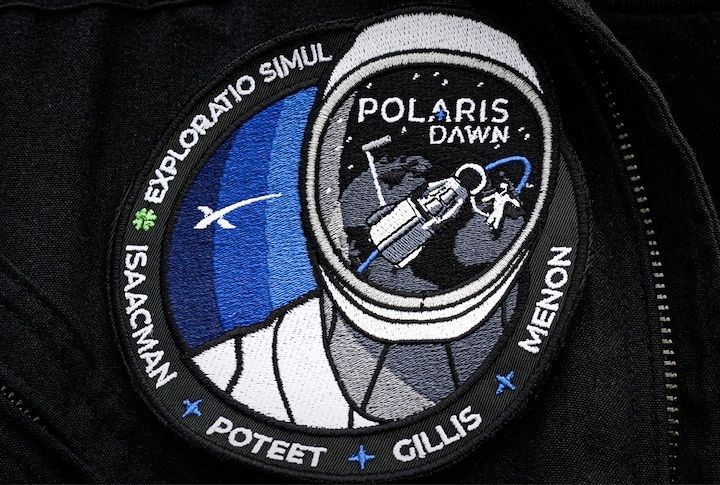
Polaris Dawn crew shows off new SpaceX spacesuits for 1st private spacewalk
This first ever private spacewalk will be bringing some serious style to outer space.
SpaceX's privately-funded crewed mission, Polaris Dawn, is moving toward a launch sometime this summer. The four-person crew, which includes the mission's funder, billionaire philanthropist Jared Isaacman, recently completed acceptance testing for SpaceX's new extravehicular activity (EVA) spacesuits, which they will wear as they become the first private citizens to perform a spacewalk on orbit.
In addition to Isaacman, the crew includes two lead operations engineers at SpaceX, Sarah Gillis and Anna Menon, serving as mission specialists, and the mission pilot, retired United States Air Force Lieutenant Colonel Scott "Kidd" Poteet. Training for their upcoming mission has included hands-on work developing SpaceX's new EVA suit, which recently reached its last major developmental milestone test as the crew donned their suits in a vacuum for the first time.
"The Polaris Dawn crew recently completed a series of spacesuit acceptance tests in preparation for the mission's extravehicular activity," reads an update on the mission website. Wearing their EVA suits in a vacuum for the first time allowed SpaceX to collect a number of different data ahead of the crew's upcoming mission, when they will wear the suits in the vacuum of space.
According to the Polaris website, the vacuum environment allowed SpaceX to collect a number of data on what to expect during an actual EVA:
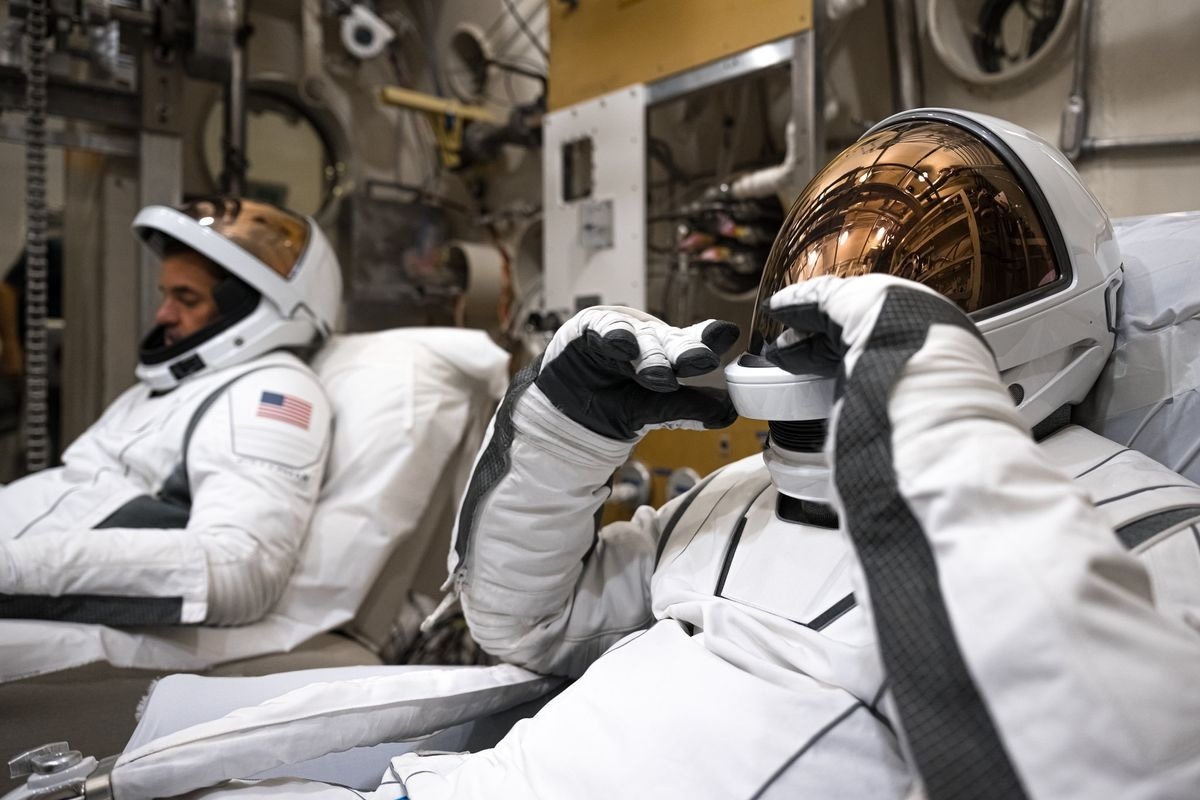
- "Familiarization with how the spacesuit performs in a vacuum;
- Collection of spacesuit and biometric data to assess the overall system’s performance in a flight-like environment;
- Understanding of general impacts of pressure changes on their body during pressurized operations;
- Insight into the various thermal states expected throughout the spacewalk; and
- An elevated metabolic period for the crew to simulate the expected workload during the spacewalk, as well as a reduced-activity period to understand the trend of body temperatures throughout the operation"
A number of photos from the test were posted to the Polaris Porgram's Flickr account, showing off SpaceX's sleek new, albeit familiar, spacesuit design. Polaris Dawn is a follow-up mission to SpaceX's first private astronaut launch, Inspiration4, aslo funded by Isaacman, and the first of three potential missions for the Polaris Program. Each will help raise money for the pediatric cancer research center St. Jude Children's Research Hospital.
The first images of SpaceX's EVA suit, which, on the outside, looks like a bulkier version of their intravehucliar actitivy (IVA) suits — pressure suits worn during launch and landing of a spacecraft, but not designed to operate in the exposed vacuum of space — were revealed on the company's website May 4.
But Polaris Dawn's new images from the recent tests highlight some of the differences between the IVA and EVA suits.
The suit's helmet, particularly, has received some upgrades, including a new heads-up display for astronauts to view data such as their suits' internal pressure, temperature and humidity. SpaceX's EVA suits also contain new insulation materials and joint improvements for increased mobility and temperature control.
Polaris Dawn is scheduled to last five days, and will involve almost 40 different science experiments for the crew to conduct while in space, including testing the new EVA suits and the capabilities of their Crew Dragon spacecraft while exposed to the vacuum.
The Polaris team had been targeting no earlier than July 31 for the launch of their historic mission, according to a July 3 post on X, but that date may be highly tentative after a recent incident during the launch of a set of SpaceX Starlink satellites.
A July 11 launch of a SpaceX Falcon 9 rocket carrying 20 additions to the company's satellite internet megaconstellation ended in failure, with the second stage experiencing a phenomon that led to a catestrophic loss of the entire payload. As a result, all Falcon 9 launches have been put on hold, pending the results of investigations from SpaceX and the Federal Aviation Administration (FAA).
The grounding of the Falcon 9 may also have implications for NASA's upcoming missions to the International Space Station (ISS), which was slated to launch both a cargo mission and a crewed mission to the space station in the coming months.
Quelle: SC
----
Update: 19.08.2024
.
Polaris Dawn’s Scott Poteet: From veteran jet pilot to novice space pilot
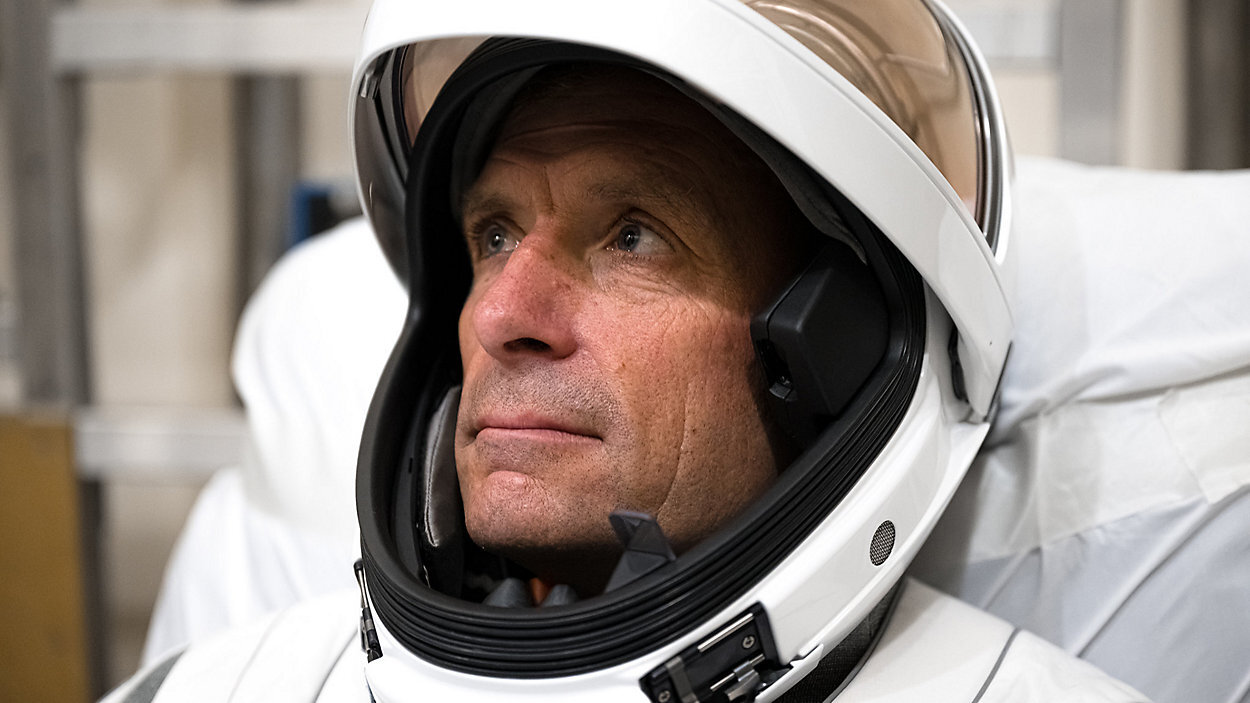
Scott “Kidd” Poteet is the pilot for the Polaris Dawn mission. While he has a lot of experience flying in the skies, this will be his first time being in space. (Polaris Program/John Kraus)
CAPE CANAVERAL SPACE FORCE STATION — As a pilot of Polaris Dawn, which plans to conduct the first commercial spacewalk, Scott “Kidd” Poteet says he is not afraid about going into space for the first time.
“I am not scared at all,” said the 50-year-old Poteet, who has a long career being a pilot in the military.
The Polaris Dawn mission is another project by philanthropist and CEO of Shift3, Jared Isaacman, who launched the first all-citizen spaceflight with the Inspiration4 mission in 2021. This mission, like Inspiration4, will raise funds for St. Jude Children's Research Hospital.
The Polaris Dawn mission is set for Monday, Aug. 26, 2024, and it will see four private citizens orbit Earth in a SpaceX’s Dragon spacecraft for five days, during which a series of experiments will be conducted, including the first ever commercial spacewalk.
How it started …
But for Poteet, the journey to space started on the ground and it was not easy, he admitted.
“I was not a good student in high school. I struggled. The only reason I went to college was I was recruited to run cross-country, and track. I was a distance runner. Ended up going to college to run at the University of New Hampshire. Even when I got there, I struggled with academics and found my niche with a program called Outdoor Education,” he shared.
Poteet spent his four years in college doing a lot of physical activities, like SCUBA diving, rock climbing, whitewater rafting and winter mountaineering. This love of physical activities continued on to participating in triathlons.
He admitted that his unique route did not make him a “traditional” astronaut.
“Even with that, I really didn't excel as, as an academic student. Cs and Ds at best, but I did graduate. So, point being is I do not have your traditional NASA astronaut background aeronautical engineering or medical background,” said the married father of three.
But it was during his freshman year that things took off for the future pilot after seeing a flier that showed a KC 135 tanker plane refueling another plane.
Being young and impulsive, he joined the ROTC program and after that, he went to pilot training and spent 20 years flying F16s, flew with the famed Thunderbirds, and even saw combat and did operational testing.
He did all of this while dealing with one minor issue.
“I puked my brains out. I have this tendency to get motion sickness. Still do back of the Uber. I'm terrible,” the 50-year-old said as he laughed. “But it doesn't deter me from pursuing the goals and dreams that I have. And if anything, I hope younger generations use me as an example of these small obstacles.”
… How It’s Going … into space
His flying experiences allowed him to meet Isaacman, who at the time owned Draken International, that trained pilots for the U.S. Armed Forces in Lakeland Linder International Airport in Lakeland, Fla.
After Isaacman sold Draken International, he set his eyes upward and had conversations with SpaceX, revealed Poteet.
Those conversations eventually morphed into something that would change how people saw space travel, he said.
“So, we wanted to prove that space is open to anyone, and we want to break down those ceilings. And and so we created the Inspiration4 mission, and we randomly selected his crew to prove that anyone could train and go to space. And, you know, and at the same time, we can't neglect our planet. So, we wanted to partner with a nonprofit organization that can do good for Earth and the people that occupy it,” he said, which started the partnership with St. Jude Children’s Research Hospital.
Inspiration4 raised millions of dollars for St. Jude. And the mission introduced Poteet to his first space position, but he is the first to admit it was a title more than anything else.
“You know, sometimes it's referred to as mission director. I was not a mission director. What they do at SpaceX in Mission Control is, is a whole different ball game. I don't have that academic background or experience, so I helped out wherever I could, whether it's logistics, getting them to their training, setting up a lot of the the relationship with St. Jude, the fundraising, the PR events, working with our PR director Sarah Grover, and it was just a big success all around,” he said about his time during Inspiration4.
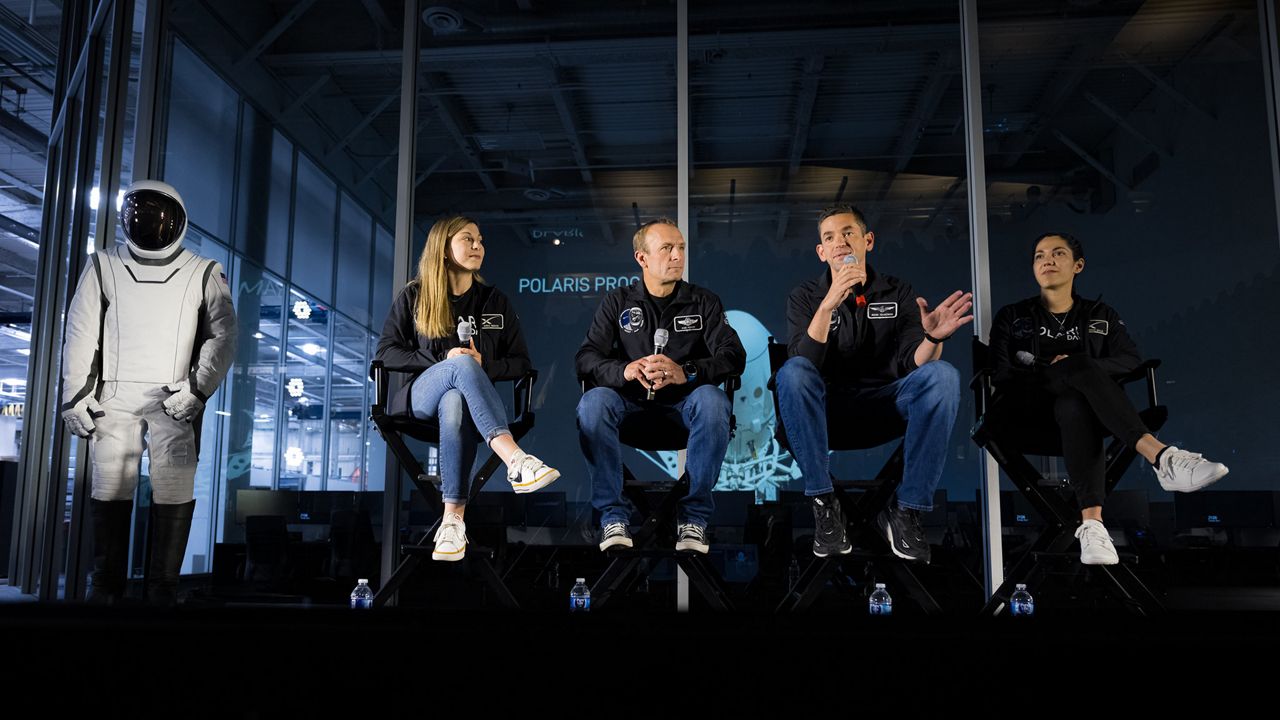
However, now it will be his turn to join Isaacman to go into space, along with Polaris Dawn crewmembers Anna Menon, the medical officer and a mission specialist, and Sarah Gillis, who will also be a mission specialist. Both Menon and Gillis are lead space operations engineers at SpaceX. Isaacman will be the commander of the Polaris Program’s Polaris Dawn.
Poteet shared that the training was both physically and mentally demanding.
About the Polaris Dawn mission
The mission is set to go beyond what SpaceX’s Dragon capsule has ever done before, Poteet said.
“We're going to stretch the limits of the Dragon capsule, you know, and at the same time we're going to bring it down to vacuum, go outside and all of that working in a pressurized suit for the first time. All that takes is physically demanding. So, we set up this program from the very beginning to kind of replicate some of the things that NASA does,” he revealed.
The Polaris Dawn mission is “totally independent” and the first of a series of missions, Poteet said. This first one will be the first time there will be a commercial spacewalk. And all four will be wearing a SpaceX spacesuit, also known as an extravehicular activity (EVA).
The development of the suit took time and a challenge that SpaceX took on, said Poteet. Spectrum News reached out to SpaceX to talk more about its spacesuit, but the California-based company did not comment back.
“… what we ended up on for objectives was the first commercial EVA because if you're going to send hundreds, thousands of people to the lunar surface and eventually Mars, you're going to need some type of spacesuit that will keep you alive, you know, under very austere environment,” Poteet shared.
He went into greater detail of the steps that need to be taken for the first-commercial spacewalk.
Another objective for the four-person crew is to go further into space than anyone has in more than 50 years, Poteet said, saying that they are planning to go on the farthest planned orbit.
He also touched on some of the medical experiments that will be done during the mission.
As many may be familiar, the human body changes in microgravity and goes through changes, such as the airway. One of the experiments is a nasal airway assessment, where he and Menon will take long, thin endoscopic cameras, and with their noses numbed, slide them up the nasal canal and down the backside of their throats to take pictures.
“And so, we'll take images before, during and after (the mission). So, all these again, there's 40 (medical experiments), all to help figure out these challenges, because we just don't want to have to deal with them in the future,” he explained. “When you're going to Mars, it's eight-ish months to get there and you think about the duration you're going to spend on the surface and then eventually you got to come home. You know, these aren't going to be one-way trips. So, you're talking multiyear type missions and you got to be able to manage health care appropriately.”
Another part of the mission objective is the testing of Starlink satellites. SpaceX owns the Starlink company, which sends up communications satellites. Poteet calls Starlink a “game changer.”
“So, Starlink is a game changer, and that's what SpaceX is hoping; provides internet services anywhere in the world based on the satellite mesh constellation that they've created,” he said, adding that it will be beneficial for space travel.
He said there is a difference of Starlink’s laser communication versus the more popular way of communicating using radio signals from ground-based facilities and communications satellites.
With radio signals, there can be gaps in coverage and it is believed with laser communications, there won’t be. While the Polaris Dawn mission will be using the traditional means of communications, it will be experimenting with Starlink, Poteet explained to Spectrum News.
Poteet said missions like Polaris Dawn will help become the building blocks of larger space missions, very much like what the Mercury program did for the Apollo missions.
“In a very … good analogy that someone once made was what NASA's did early on with initial space flight. You got Mercury and then eventually you went to the moon with Apollo. Well, in the middle there was Gemini. Gemini in the 60s, they had to solve some big challenges in order for them to make the leap from initial spaceflight to going to the moon. They had to figure out docking, how to do an EVA, multi-crew missions, longer durations,” he said.
His advice for future space explorers
From flying jets to doing triathlons, Poteet has overcome a lot of things, which has given him a unique outlook on life.
When asked what advice he would give his own son, who is interested in space, and future space explorers, he said it may sound like a cliché, but there is a lot of truth to it.
“And honestly, it's cliche, but it's sincere when I say anything is possible if you set your mind to it. And hopefully I'm an example, you know, one small example of that not coming from an academic background, but I built relationships and that's really important to have people to mentor you along the way and to get the advice from their experiences and to remain humble. But it certainly takes a village, but have those goals and objectives and pursue it with a passion,” he said.
Quelle: SPECTRUM NEWS13
----
Update: 22.08.2024
.
Polaris Dawn Is SpaceX’s Most Experimental—and Risky—Human Spaceflight Yet
The four-person mission is scheduled to launch no earlier than Monday at 3:38 a.m. EDT.
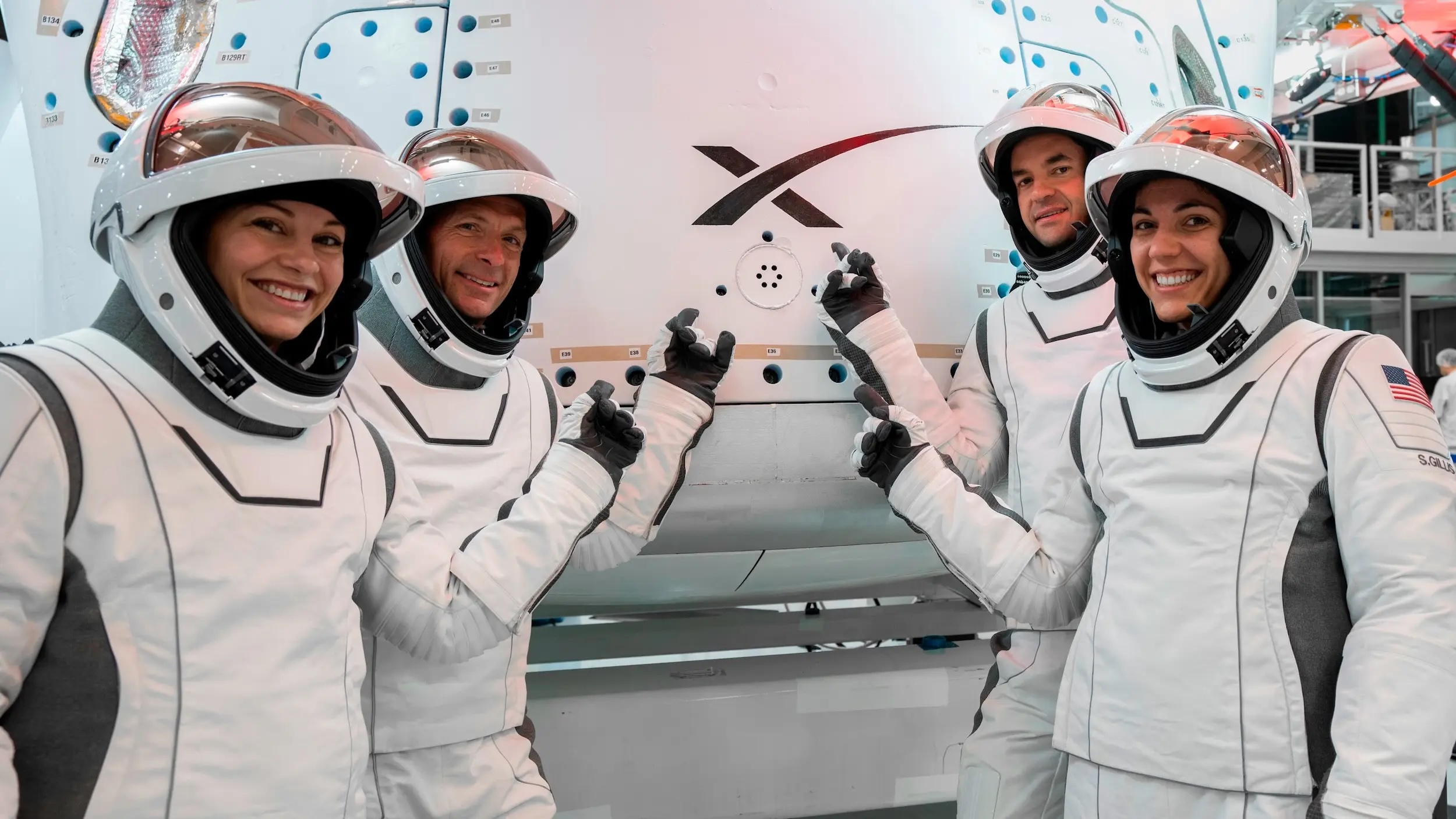
Polaris Dawn crewmembers Anna Menon (from left), Scott “Kidd” Poteet, Jared Isaacman, and Sarah Gillis don the SpaceX EVA spacesuits they will wear on their historic spacewalk. [Courtesy: Polaris Program]
On Monday, a small fleet of Dassault Alpha stunt jets landed at Kennedy Space Center in Florida carrying the four-person crew of arguably the most perilous SpaceX mission to date.
The jets are owned by billionaire entrepreneur and Polaris Dawn commander Jared Isaacman, who purchased the five-day orbital mission and two other private astronaut flights from SpaceX in 2022. Among other feats, Polaris Dawn will ascend to orbital heights not reached since the Apollo 17 astronauts in 1972 and feature the first attempt at a commercial spacewalk.
“The idea is to develop and test new technology and operations in furtherance of SpaceX’s bold vision to enable humankind to journey among the stars,” Isaacman said during a mission overview briefing on Monday.

But with those feats comes a degree of risk. At their apex, the astronauts will travel through a portion of the hazardous Van Allen radiation belts. And because the Dragon spacecraft that will carry the crew has no airlock, all four astronauts will be exposed to the vacuum of space during the historic spacewalk.
Polaris Dawn is scheduled to launch no earlier than 3:38 a.m. EDT on Monday within a four-hour window from KSC’s Launch Complex 39-A. Earlier this week, the Dragon capsule was transported to the pad, where teams are mating it with a Falcon 9 booster that will make its fourth flight.
Joining Isaacman will be mission pilot Scott “Kidd” Poteet, a longtime friend and coworker of the Shift4 Payments CEO. Poteet served as mission director for Inspiration4, a 2021 orbital mission—also purchased from SpaceX by Isaacman—that featured the first all-civilian crew.
Accompanying them will be the first SpaceX employees to actually fly to space—mission specialists Sarah Gillis and Anna Menon. Gillis, a SpaceX engineer and astronaut trainer, has prepared several NASA crews that have reached the final frontier and was Isaacman’s instructor for Inspiration4. Menon, the company’s lead space operations engineer, will also serve as Polaris Dawn’s medical officer.
This week, crewmembers will conduct a refresher on the mission’s nearly 40 planned experiments, dry dress rehearsal, and launch readiness review. They will spend a maximum of five days orbiting the Earth before splashing down at one of seven locations off the coast of Florida.
Great Heights
Polaris Dawn will waste no time achieving its objectives, beginning with a historic climb on day one.
